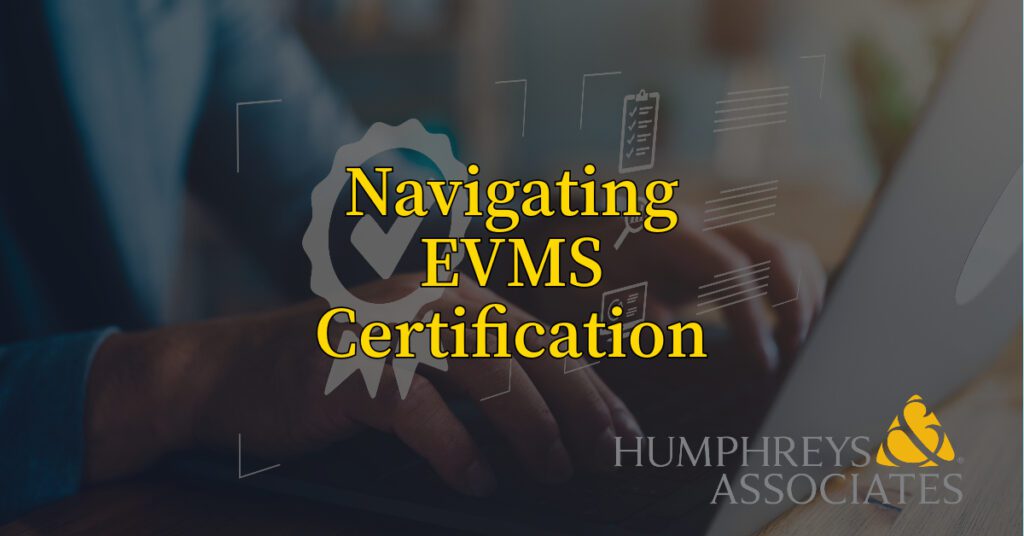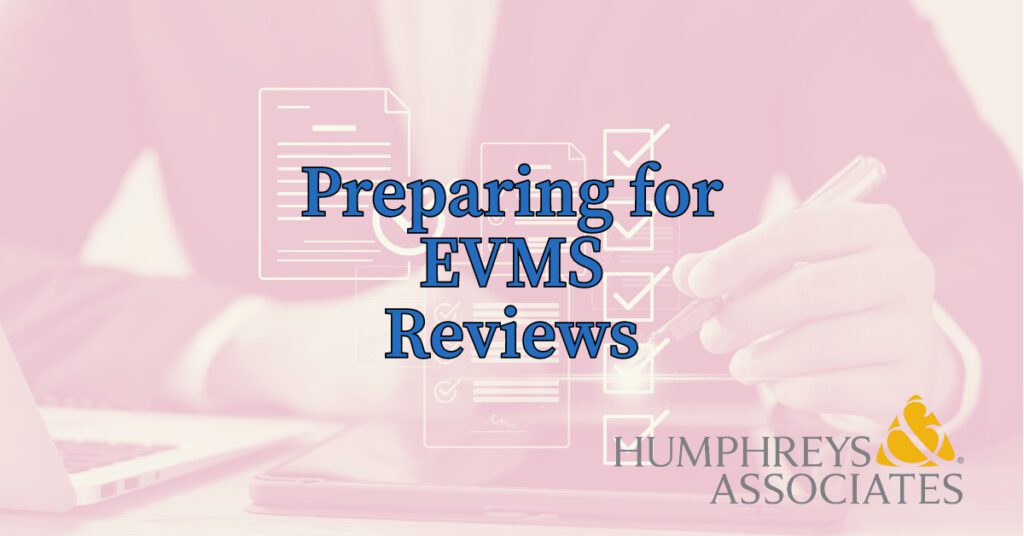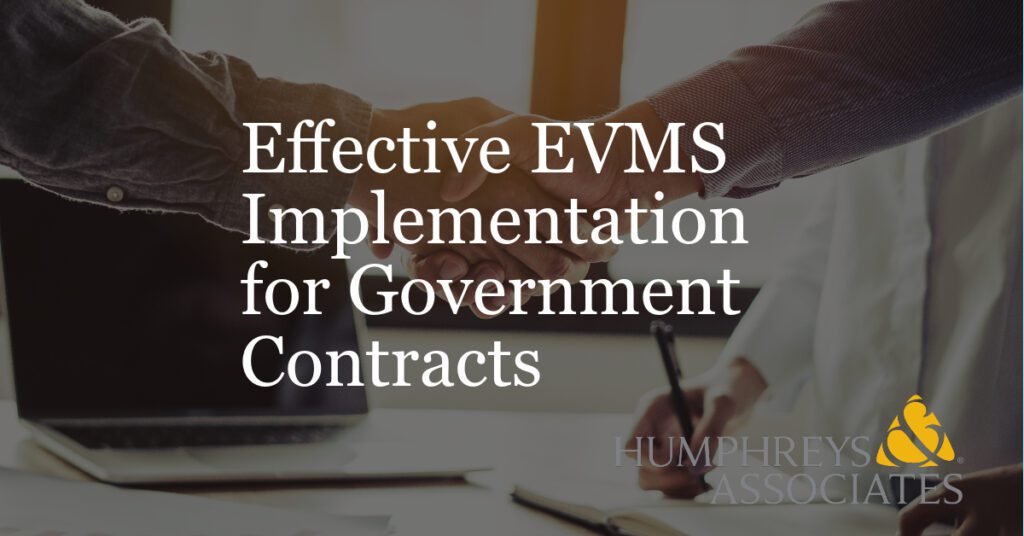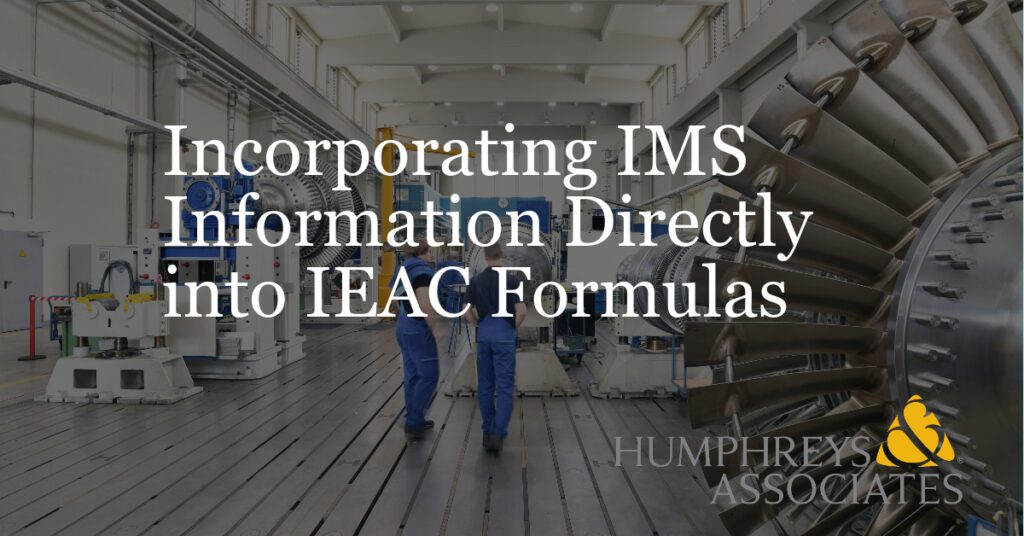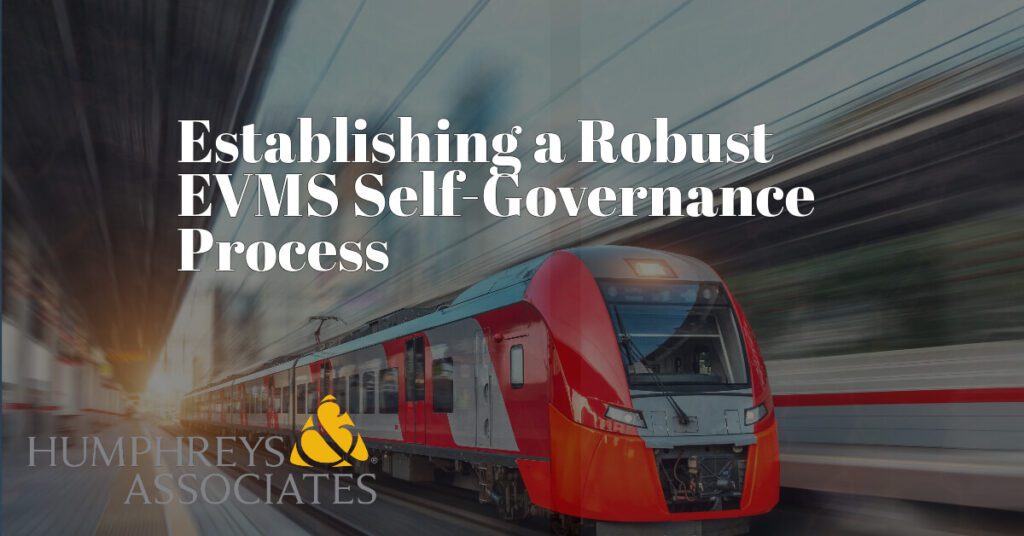Timely Subcontractor Data – Mission Impossible?
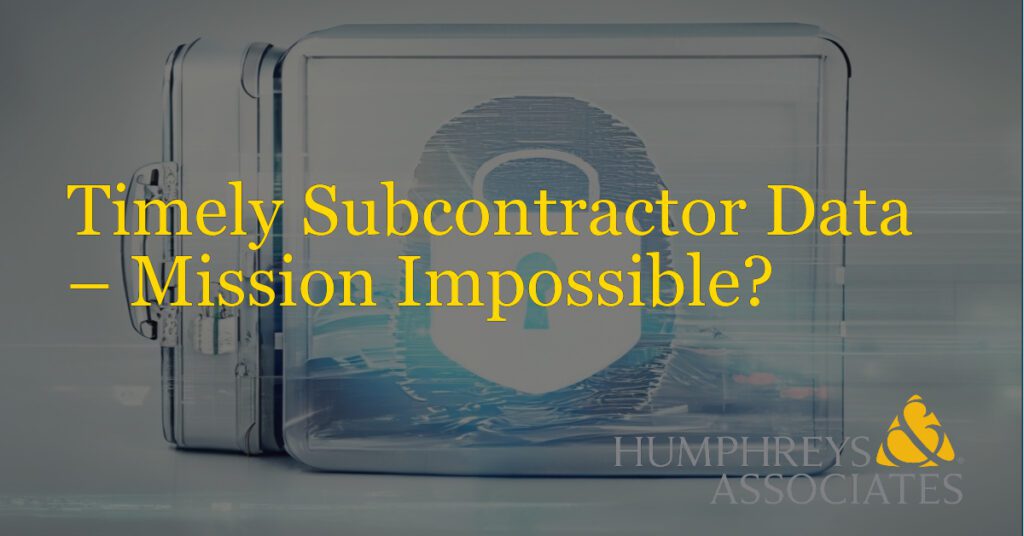
With the arrival of the Integrated Program Management Data and Analysis Report (IPMDAR) requirements for electronic cost and schedule dataset submittals, DoD contractors with EVMS or EVM reporting contractual requirements have a tighter time frame for submitting their month end data. A previous blog, Introduction to the IPMDAR Data Deliverable – Tips for Producing the Outputs summarizes these data reporting requirements. This includes the Contract Performance Dataset (CPD) for the time phased cost data and the Schedule Performance Dataset (SPD) along with a native file export out a schedule tool.
For month end data submittals, the IPMDAR Data Item Description (DID), DI-MGMT-81861C (20210830) states:
1.8.1 Monthly Submission Requirement. IPMDAR data shall be required at least monthly. The reporting frequency shall be specified in the Contract Data Requirements List (CDRL). All reports shall reflect data from the same accounting period and shall be provided at any time after the close of the contractor’s accounting period, but no later than sixteen (16) business days after the contractor’s accounting period end date.
On the surface, you might say requiring data delivery 16 business days after the contractor’s accounting period end date doesn’t sound unreasonable or even much different from the previous Integrated Program Management Report (IPMR) DID (DI-MGMT-81861A), and you would be right.
What is the issue?
Some people think that because the IPMDAR submittals are electronic datasets instead of report formats it is easier to generate and report that information. That is not necessarily true, and shortening the data turnaround time exacerbates the problem. The tighter time requirements also apply when there are EVM reporting subcontractors providing performance data to a prime contractor.
The third sentence of 1.8.1 above states: “All reports shall reflect data from the same accounting period…” This requirement is very challenging, especially when a subcontractor operates on a different month end accounting calendar; for example, a “5-4-4” versus the prime’s “4-4-5” calendar. Even when the prime and subcontractor are on the same month end calendar, for the prime to submit IPMDAR data in 16 business days, the subcontractor has less time to provide their data to the prime. It becomes even more challenging on very large programs that have several tiers of subcontractors.
Subcontractors cry “foul” because they don’t have enough time to get all the performance data ready in the reduced time. Prime contractors cry “foul” because they are held accountable for data that may or may not come from one or more tiers of subcontractors in time for them to conduct basic data analysis and deliver month end data for the IPMDAR. The government customer still insists all the data must be for the same accounting month end date, even though that may not be well defined. Customers also do not want the subcontractor data delayed by a month just to get the subcontractor data “caught up” – i.e., “comparing apples to oranges.”
Is incremental delivery of IPMDAR the answer?
The government suggests that incremental delivery could resolve this dilemma. The DoD IPMDAR Implementation and Tailoring Guide (August 24, 2021) expands on the paragraph from the IPMDAR DID:
1.8.1.1 Incremental Delivery. Reports may be provided incrementally, including preliminary data, with the number of days for delivery of each submittal tailored in the CDRL. Data delivered is not considered authoritative until the final submission and signature. The recommended incremental delivery process is the Schedule, followed by the CPD and the Executive Summary, Government review of submittals, Government directed Detailed Analysis, Contractor Detailed Analysis delivery and all final data.
The IPMDAR Implementation and Tailoring Guide also provides a notional example of how an incremental delivery could be handled:
1. SPD – To be delivered with native file five (5) working days after the end of the contractor’s accounting period (may be labeled preliminary)
2. CPD – To be delivered with the Executive Summary ten (10) working days after the end of the contractor’s accounting period (may be labeled preliminary)
3. Contracting Office to select items for detailed analysis (variances) – to contractor thirteen (13) working days after the end of the contractor’s accounting period
4. Performance Narrative Analysis – to be delivered NLT sixteen (16) working days after the end of the contractor’s accounting period along with any other “final” versions of previously submitted files
Note: The notional incremental delivery plan above is not additive.
Doing the above might demonstrate to the government customer that the prime contractor is at least trying their best to make the prime/subcontract situation work – even though they would be using “estimated data” until the final versions come in from the subcontractors. Does this approach really make the timely delivery of the data easier to attain? The bottom line does not change. Per number 4 above, the prime still has to deliver all the data in “final versions” by the 16th business day following the close of their accounting calendar. The note at the bottom specifies the days indicated in each step are not “additive” – i.e., the contractor does not get 5+10+13+16 = 44 business days.
In some circumstances, incremental delivery might allow some subcontractors a bit more time to get the data to the prime contractor, but there would still have to be tighter delivery dates for the incremental deliveries, so the problem does not really go away.
What are your options?
This difficult situation arises because few contractors consider the implications of having to get all data by their accounting month end. Not all the subcontractor work elements are set up the same way. Contractors who have the EVM reporting requirement, who do or will have EVM reporting subcontractors, should address this basic difference as part of the contract negotiation process. One possible part of this negotiation could be to use the IPMDAR DID, paragraph 1.4, to help level the field for reporting purposes. This paragraph states:
1.4 Direct Reporting Contractor Role.
1.4.1 A Direct Reporting Contractor is any contractor required to provide the IPMDAR directly to the Government. This includes prime contractors, subcontractors, intra-government work agreements, and other agreements, based on the contract type, value, duration, nature of the work scope, and the criticality of the information. In this document, instances of “Contractor” are synonymous with “Direct Reporting Contractor.”
There is a footnote to this paragraph that states:
In the event that the Direct Reporting Contractor is a contractor other than the prime, the Direct Reporting Contractor will additionally report to the prime. Subcontractor data shall be provided to the prime in a manner that supports the contractor’s submission to the Government.
One solution is to negotiate to have each EVM reporting subcontractor deemed a “Direct Reporting Contractor” that submits their data directly to the government, including the customer, as well as to the prime contractor. The prime and subcontractors are each submitting their IPMDAR electronic deliverables to the DoD EVM Central Repository (EVM-CR).
Each level of contract, the prime through however many tiers of subcontractors there may be, will have the same 16 business days after their own accounting month end dates to provide all interested parties with the EVM data. The prime contractor still must at least get estimated subcontractor data to do their monthly assessment, making corrections in the next month after they have received the final version of the data from their subcontractors.
Should the government customer want analysis performed on subcontracted effort, the IPMDAR dataset submittals will be in the DoD EVM-CR. They can do that analysis independently of the prime contractor’s analysis that would be provided after the prime’s 16th business day.
This approach would put pressure on the prime because they will not have seen the subcontractor’s data prior to it being delivered to the government, but that could be addressed in the next reporting period’s “errata” variance analysis narrative. The government would also have the detailed data from the subcontractors when the subcontractor is providing a reduced set of data such as only total cost data to the prime. Should the government customer not want to do that level of analysis, the government customer may need a different contracting solution to avoid requiring EVM reporting down through various levels of contracts. This is often determined by the contract value and risk factors associated with the subcontractor.
This approach also requires the subcontractor to produce two deliverables. One for the prime contractor in an agreed upon format and one for the government customer following the IPMDAR DID electronic submittal requirements for the DoD EVM-CR. These reporting requirements should be negotiated with the subcontractor well in advance; the subcontractor needs to know their data deliverable and reporting requirements when they bid on the work effort for the prime.
This subcontractor data incorporation issue has been around for many years and can be very confusing. H&A earned value consultants can help you work through the various responses to this requirement in the best possible way for your situation. Call us today at (714) 685-1730 to get started.
Timely Subcontractor Data – Mission Impossible? Read Post »

